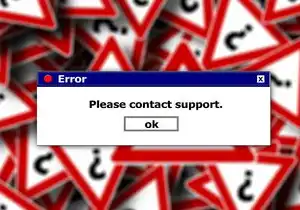HTTP 500 Internal Server Error is one of the most frustrating errors encountered by web developers and users alike. This error message indicates that an unexpected condition was encountered on the server which prevented it from fulfilling your request. In this comprehensive guide, we will delve into the causes of HTTP 500 errors, common scenarios where they occur, and practical steps to troubleshoot and resolve them.
Causes of HTTP 500 Internal Server Errors
-
Server Misconfiguration:

图片来源于网络,如有侵权联系删除
- Incorrect settings in the server configuration files can lead to unexpected behavior.
- Misconfigured modules or plugins may cause conflicts leading to internal server errors.
-
PHP Errors:
- PHP scripts with syntax errors or incorrect file permissions can trigger a 500 error.
- Outdated or incompatible PHP extensions might also be responsible for such issues.
-
Database Connectivity Problems:
- Issues with database connections, such as incorrect credentials or connection timeouts, can result in a 500 error.
- Database queries with errors or missing tables/columns can also cause this problem.
-
Resource Limitations:
- Exceeding memory limits or hitting maximum execution time can cause a script to fail and return a 500 error.
- Insufficient disk space or bandwidth allocation can also contribute to this issue.
-
File Permissions:
- Incorrect file permissions on directories or files can prevent the server from accessing necessary resources.
- Write permission issues on critical system files can lead to server errors.
-
Code Bugs:
- Bugs within custom code or third-party applications can cause unexpected behaviors resulting in a 500 error.
- Unhandled exceptions or errors in application logic can also trigger this error.
-
Server Overload:
- High traffic or resource-intensive operations can overwhelm the server's capabilities, causing a 500 error.
- Server hardware limitations or outdated infrastructure can exacerbate these problems.
-
Security Measures:
- Security mechanisms like firewalls or intrusion detection systems might block certain requests, leading to a 500 error.
- Misconfigurations related to security protocols can also cause unexpected server responses.
-
Software Updates:
- Incomplete updates or failed installations of server software components can disrupt normal operation and result in a 500 error.
- Compatibility issues between different versions of software packages can lead to internal server errors.
-
Third-Party Services:
- Dependencies on external services or APIs that are not properly configured or available can cause a 500 error.
- Malfunctioning third-party integrations can disrupt the entire workflow and result in server-side errors.
-
Content Management Systems (CMS):
- CMS-specific configurations, themes, or plugins might conflict with each other, leading to a 500 error.
- Inadequate maintenance of CMS components can introduce vulnerabilities and errors.
-
Web Hosting Environment:

图片来源于网络,如有侵权联系删除
- Shared hosting environments with limited resources or shared IP addresses can experience frequent 500 errors due to overloading.
- Differences in server configurations across various hosting providers can also cause inconsistencies and errors.
-
Network Issues:
- Network connectivity problems between the client and server can result in a 500 error if communication fails.
- DNS resolution failures or misconfigurations can also contribute to server-side errors.
-
Browser Cache:
- Browser caching issues can sometimes cause a 500 error when stale cached data prevents proper loading of dynamic content.
- Incorrect cache control headers set by the server can lead to unexpected behavior and errors.
-
Proxy Servers:
- Proxy servers acting as intermediaries between clients and servers might incorrectly handle requests, resulting in a 500 error.
- Configuration discrepancies in proxy settings can also cause disruptions and errors.
-
Load Balancers:
- Load balancers distributing incoming requests across multiple servers might misroute requests, leading to a 500 error.
- Inconsistent load balancing algorithms or misconfigurations can cause server overload and errors.
-
Application-Level Errors:
- Application-level errors specific to the programming language used (e.g., JavaScript, Python) can trigger a 500 error.
- Missing dependencies or incorrect handling of user input can introduce runtime errors at the application level.
-
Server-Side Scripting Languages:
- Errors in server-side scripting languages like Perl, Ruby, or ColdFusion can cause a 500 error if not handled properly.
- Poorly written scripts without adequate error checking can lead to unexpected server responses.
-
CGI Scripts:
- CGI scripts with incorrect paths, permissions, or environment variables can cause a 500 error during execution.
- Insecure or vulnerable CGI scripts can also become targets for attacks, resulting in server-side errors.
-
URL Rewriting Rules:
Incorrect URL rewriting rules in .htaccess files or similar directives can redirect requests improperly, causing a
标签: #http500内部服务器错误什么意思



评论列表